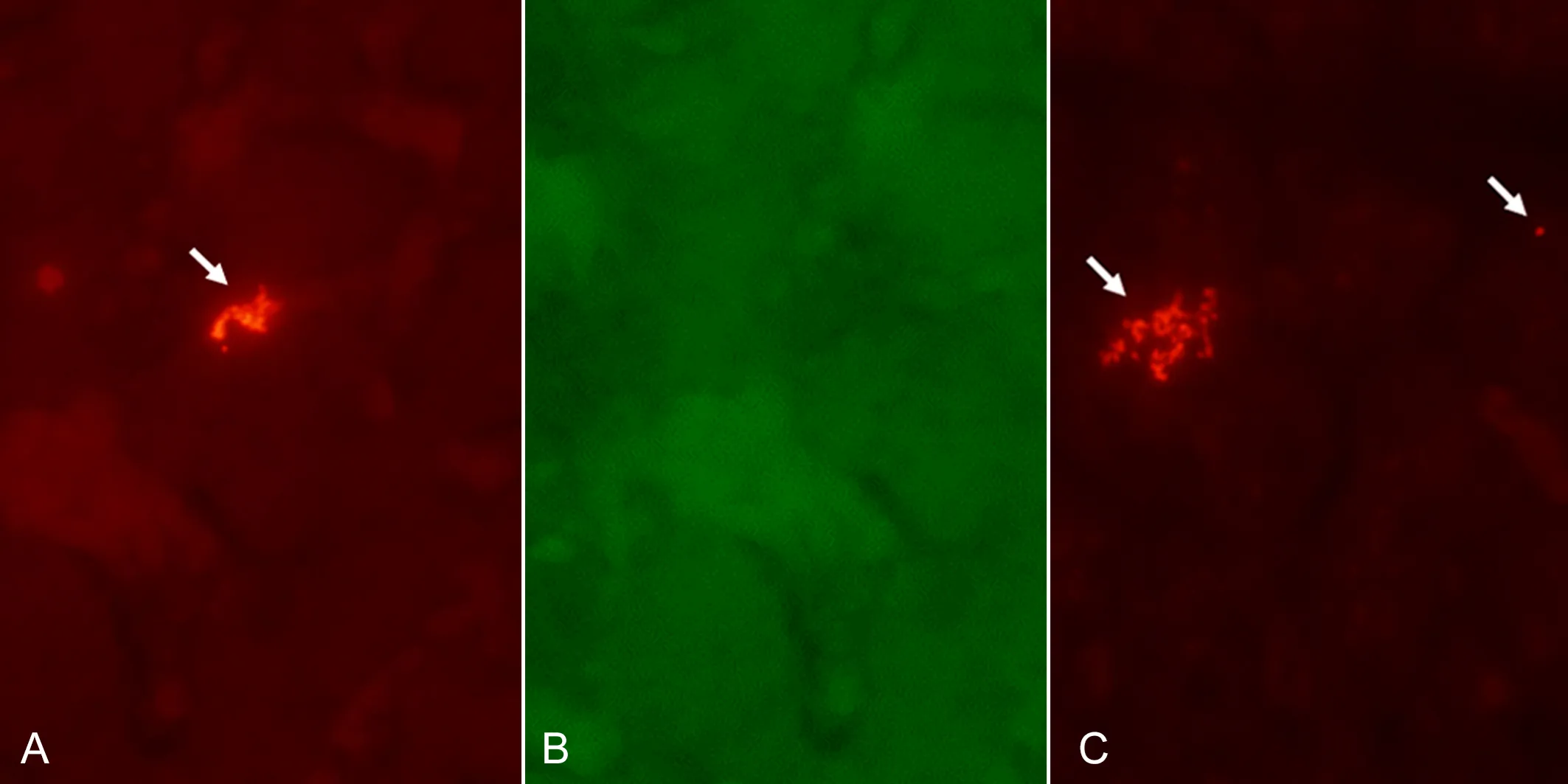Detection of Chlamydia sp. by fluorescence in situ hybridization (FISH) in histologic sections of the liver from exotic and native avian species
DOI:
https://doi.org/10.24070/bjvp.1983-0246.v16i3p159-166Keywords:
immunohistochemistry, psittacosis, zoonosis, diagnosisAbstract
Chlamydiosis is a zoonotic disease that affects several animal species. Therefore, reliable detection techniques are essential for efficient control of the disease. Fluorescence in situ hybridization (FISH) for Chlamydia sp. was applied to 137 formalin-fixed, paraffin-embedded liver sections from native and exotic birds. The samples were divided into two groups: retrospective (n=57) and prospective (n=80). The probe was designed based on an annealing sequence that targets the Major Outer Membrane Protein coding gene. Livers previously confirmed for Chlamydia psittaci by polymerase chain reaction (PCR) and immunohistochemistry (IHC) were used as positive controls. Also, 47 randomly selected samples from the prospective group were submitted to PCR for Chlamydia psittaci for confirmation. From all 137 samples, 67% (92/137) were positive for Chlamydia sp. through FISH, from which 39% (36/57) and 61% (56/80) were from the retrospective and prospective groups, respectively. From the samples of the prospective group submitted for PCR confirmation, 83% (39/47) of them had a positive correlation with FISH results. When considering the number of targeted microorganisms per 400x field, 42,39% (39/92) of the samples had up to five microorganisms, 14,13% (13/92) had from six to ten, and 43,47% (40/92) of the samples had 11 or more microorganisms per field. FISH is a specific and reliable method to identify Chlamydia sp. in histologic sections of the liver, providing an additional tool for detecting avian chlamydiosis.


